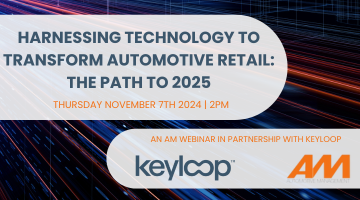COVID-19 has not defeated us, we are coming back. My wife is a professional epidemiologist, and an entrepreneur, and her rage at how this process was handled is a topic for another day.
Where do we prioritize as we come back from lockdown? Should car dealerships be looking at marketing? Getting out there? If you believe everything you read, sales and marketing seem to have gone entirely digital. Well, they have not, not by a long shot. But, was this our final wake up call to get ahead of the game?
For nearly 20 years, I have been running data science start-ups focused on digital marketing for retail.
Our customers include four of the top 10 US retailers and three of the top 10 global OEMs & dealers.
What is clear is that we need to turbo charge customer experience (CX) to get moving again.
The rules are simple. We need to get smart, increase efficiency, reduce expenditure, while maximizing ROI and sales. Making any, and all, our marketing interactions count.
Experience has shown me that success in any dealership requires timely knowledge of what your customers are doing and working at speed to turns any prospective deals into offers.
The steps for making your marketing comeback outlined below make all your other sales channels more effective, because everything speeds up and information about your customers is adjudicated by state-of-the-art AI technology.
Know your customer digitally
Digital marketing and selling reduces the human touch. That is obvious. But consumers will be visiting dealerships less frequently. So how do we gauge what they want? What they are looking for and how they feel about our brands?
NPS surveys suck. Steve Jobs hated focus groups, and never used them. Email blasts do not work. We ignore them. So, how do you get to know your digital shoppers?
Well, you already know your current customers, but you may not know your prospective customers. The challenge is understanding their behaviour regardless. If your sales team cannot see the customer, you still have to “deal” with them. That means you must know what they want.
As we all know, any “deal” starts with what you know about the customer. You translate that knowledge of the customer at that moment into a “deal” that turns into a meaningful “offer”, but only if it arrives at the right time, at the right place. And of course, in digital, you do not have a lot of time – call it 60 seconds tops for convenience.
For a current customer doing it digitally – you can compare their current digital shopping experience (their live clickstream in real time) with all the previously digitally recorded customer experience with your dealership and brand i.e. vehicle purchases.
You cannot make a personalized offer to a digitally shopper unless you can reference in near real-time their previous digitally recorded experiences.
The most used term for previous digitally recorded experiences is the “customer journey”, a time series of all demographics, vehicle purchases, service records, marketing events, etc.
A known customer’s clickstream may be different than their previous experiences. They could be looking at minivans on your website, but you know they currently drive a convertible. A family in the works, perhaps? If you cannot compare their current clickstream with their customer journey, you might never know which way was up. They may never have looked at minivans before, so now what?
It could be that similar customers with a £50,000 convertible buy the Platinum version of your brand’s minivan. But the current offer loaded on the website says – offer a £30,000 basic model because this is the version long-dated in your floor plan. What to do? Obviously, you would offer the £50,000 minivan, but can you? Will they buy it? (By the way all this happens in 45 seconds, tops).
Do you have the technical chops to seize on the info available in your customer’s current clickstream? Call up that customer journey and score an event’s likelihood of making a sale? Then determine the £50,000 minivan is the highest score to close a sale, and present the customer an offer before they leave the site? If you cannot – then you have to offer the £30,000 model that has been loaded in your rules-based CX engine. That is a sale, but it was not your best option.
Our Cerebri AI CVX platform was built from the ground up to specifically operate at digital speed, with an AI-based decision engine, not an out of date rules-based engine.
What do you with an anonymous, new customer? Their clickstream can be compared to known customer clickstreams that we have already recorded, and we can see what known customers have done in similar circumstances.
Processing anonymous customers will likely generate lower scores for possible offers versus known customers, but if you can access more third-party data, you may be able to get much closer to the mark and increase your conversion to sales.
Know your technology digitally
The bottom line is that technology really, really matters.
Business Intelligence tools that were once the rage are already past their sell-by-dates. Most BI tools use rules-based decision engines that focus on demographics and personas. But, our AI-based modelling in multiple verticals has shown that demographics and other static features drive only 10-25% of CX insights.
For instance, in our most recently completed engagement, we used 750 raw data features and 1,250 engineered features to measure commitment to our customer’s brand – their value score – and only 10% of these features that drove these CV scores were demographics and other static features.
Know your speed digitally
Speed does not kill in digital, it is table stakes, seconds not hours and days.
As outlined above, everything has to be lightning fast, especially the ability to compare what a digital shopper’s prior customer journey looks like compared to what they are currently interested in as exemplified by their current clickstream on your website.
End-to-end blazing speed, superior understanding of the customer, all lead to better deals translated into timely offers that capture revenue now. The future is here and we are coming back.
Author: Jean Belanger, co-founder, and chief executive of Cerebri AI














Login to comment
Comments
No comments have been made yet.